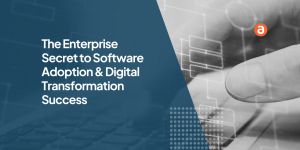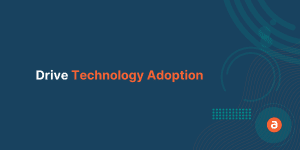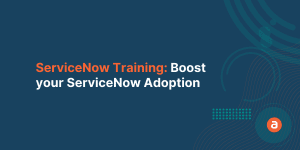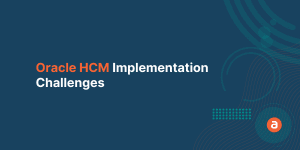The increasing popularity of remote work demands employers to find an effective employee training trend that best suits the current situation and beyond. Given this context, it comes as no surprise that personalization is becoming increasingly important in employee training and development.
If you too are looking out for the latest employee training trends that can be beneficial for your employees as well as your business, you’ve come to the right article. It is wise to understand right at the beginning that based on demographic, industry, or personality characteristics, what works for one group may need to be altered for another.
Training managers will need to come up with more dynamic and diverse training programs that can meet the needs of all their employees. They need to take into account the different types of backgrounds and various degrees of skills while designing the employee training program.
With remote work becoming more mainstream, thanks to the pandemic, companies across the world adopted a more active digital-first approach.
Many may argue that face-to-face training guarantees you more involvement with lesser interactions, but in the remote world not only is it a far-fetched option to make happen but also not a very effective, considering that ‘offices’ the way we knew them have yet to be fully operational again.
Employee Training Trends
In the past, employee training was a one-time event that took place when an employee was hired. However, today’s business world is more competitive than ever, and employees need to be constantly learning and updating their skills to stay ahead of the competition.
As a result, many companies are now using various enterprise employee training techniques to keep their employees up-to-date on the latest trends and technologies. The following are the latest employee training and development trends:
The following are the latest employee training and development trends to look out for 2022:
- Microlearning
- Soft skills development
- Gamification
- Cybersecurity
- Personalized training and upskilling
- In-app learning
- On-Demand Training
- Online learning
Microlearning
Microlearning seeks to deliver learning materials to employees in small bits, enabling them to grasp the content quickly. This system favors the employee because they can continue learning, even if they have an otherwise bust work day.

Additionally, this technique is based on the findings that people’s attention span reduces with extended periods. (Did you know that learners can forget almost 90% of the information they learn within the first month!)
Read more: 3 Ways to Overcome Forgetting Curve with DAP
The engagement level and knowledge retention in microlearning is high. The information is provided in a bite-sized format that is easy for employees to concentrate on while improving their work capacity.
In a world where employee experience is becoming increasingly important to organizations, micro learning is certainly going to be one of the most preferred employee training trends for 2022.
Soft skills development
Despite the fact that technical know-how and an understanding of business processes are still essential in the formal work setting, the rise of remote work has raised the importance of developing a workforce that is equipped with the necessary soft skills needed to thrive in a remote work setting.

This includes skills like emotional intelligence, collaboration, and communication. And with companies working in a cross-cultural, business leaders are focused on incorporating soft skills into their training programs, now more than ever.
With a global workforce becoming the norm, it is but recommended that companies invest in soft skills training for their employees in 2022.
Gamification
Traditional ways of training are now becoming less impactful for multiple reasons, and lack of engagement is one of the most important ones.
.png)
Gamifying training can help employees connect better with their learnings while also raising performance levels. This is the next big thing when it comes to employee onboarding and training.
Gamification uses engaging games and other fun techniques to increase employee engagement and motivation. Gamification allows businesses to create a safe and stimulating environment that contributes to positive training outcomes.
Gamification involves the use of reward systems by utilizing points, badges, and other game features, then implementing them into traditional training courses and modules, in order to give your employees a new way to learn. It is becoming a growing trend, primarily because employees tend to feel more engaged and motivated in the learning process.
Cybersecurity
Companies are seeing a significant increase in the demand for cybersecurity training, especially for people who are new to the industry. Many companies are now struggling to find enough IT security professionals who can help them prevent enterprise cybercrimes.

There has also been a significant increase in the number of hacking incidents in recent years, all of which have led to a growing demand for cybersecurity training. There have been several instances where several high-profile companies have been hacked in recent years.
Cybersecurity is a huge concern for companies both large and small. Training employees in how to watch out for phishing emails, hackers and other cybercrimes will save companies millions of dollars in the long run.
Personalized training and upskilling
A personalized training plan is one of the top training trends because of its effectiveness. Personalized training creates a tailored experience for each employee and ensures they develop the correct skills to reach the organization’s goals.
You can accomplish favorable results by providing individual training to your staff based on their skills, knowledge, and responsibilities. This procedure takes a long time to accomplish, but it is effective. It requires a detailed analysis of employees’ work potential in order to devise a suitable training program.
Upskilling is similar to personalized training with its ability to offer a custom experience for each employee. The key difference between upskilling and personalized training is upskilling is the process of learning skills adjacent to the field in they currently work. Upskilling provides value to both employers and employees because of its ability to keep employers hiring in-house when positions open.
In-app learning
It’s no secret that remote work makes it hard to keep learners’ attention. That is why involvement is so significant in learning and development. Taking classroom information and transferring it to a virtual setting is not enough. Instead, take advantage of in-app learning or hands-on learning experiences.
In-app experiences let you create learning, onboarding, training, and support content inside the digital tools your employees are already using. This type of training lets your employees learn while they’re in the flow of their work using the same tools. In-app experiences give employees engaging and interactive training with the right content at the right moment.
On-Demand Training
Today’s workforce is cutthroat, goal-oriented, and self-driven. You must equip top talent with the resources and support they require to flourish in order to attract and retain them. With the millennials overtaking the workplace, remote work is becoming a staple of work-life, which will be a higher demand for on-demand training in the workplace in the upcoming years.
On-demand training provides employees with the information when they really need it, therefore, saving both time and resources for employees and companies. On-demand training offered via remote learning technologies provides the ease and flexibility of the contemporary workplace by allowing employees to upskill at their leisure – at their own time, pace, and device.
Online learning
E-learning allows employees to learn at their own pace and can be accessed from anywhere in the world. Employees are given access to a library of online resources, which they can use to improve their skills. With this, remote employees can also be benefitted. Employees can receive their training anywhere, anytime and their progress can be effectively monitored by the employers. With this, training can be tailored to fit the specific needs of each employee.
Another employee training trend is not to focus on just one method, but to take the best of each method to impact employees in different ways. Companies often use blended learning as a way of describing their approach to e-learning. You can benefit from each employee training method when you use a blended learning approach.
The need for an Innovative Training Solution
Unprecedent times call for innovative solutions. With remote work becoming a regular way of life for many companies, the need for innovative training solutions becomes non-negotiable.
A training that can resolve employee queries at the time of their need helps save employees’ time and company resources.
What you need is a training method that can provide ease and flexibility of the contemporary workplace by allowing employees to upskill at their leisure – at their own time, and pace. One such innovative employee training method is the Digital Adoption Platform.
Employee Training with Digital Adoption Platform
One of the benefits of using a DAP is that it can provide training whilst an employee is working. Often, when using an application for the first time – the amount of information thrown at you while learning to navigate the tool can be overwhelming. Having in-app guidance can make your employees work easier and reduce the burden on IT support.
.png)
Automation provided by a DAP can help you save ample time spent on manual tasks. Most companies spend countless hours on repetitive tasks, which is not ideal in any case. Implementing a DAP like Apty helps overcome employee frustration from monotonous tasks but also improves the productivity of everyone involved.
Apty analytics help managers evaluate the performance of their employees more effectively. Apty also helps in automating and accelerating employee training programs, reducing technical support costs. They also help achieve smooth digital transformation. Apty DAP allows employees to access their learning and training content at any time and place, whether they work from the office or remotely.
Conclusion
Trainers can assess a learner’s needs and modify the curriculum to meet their needs with the help of the latest technology. Employers can recognize where gaps exist, and employees will be able to work more efficiently towards their career goals as a result. Smart, intuitive learning tools can minimize the loss of a physical work environment without sacrificing adoption.
Apty DAP can help track user behavior, identifying where employees face maximum friction and make changes to their training content and processes accordingly. Investing in a robust platform like Apty can help companies to get the best out of their training initiatives, irrespective of the enterprise applications they use. Apty ensures effective employee training and seamless software adoption.













